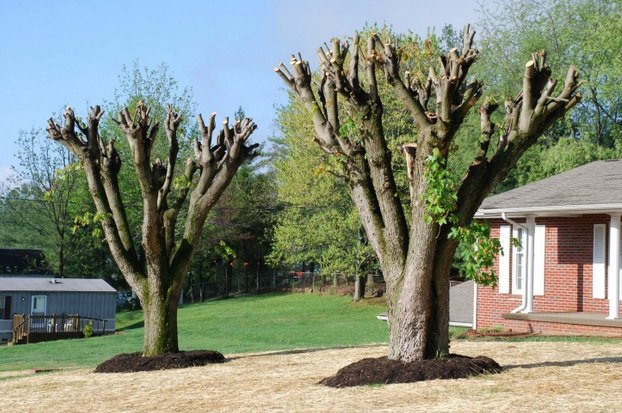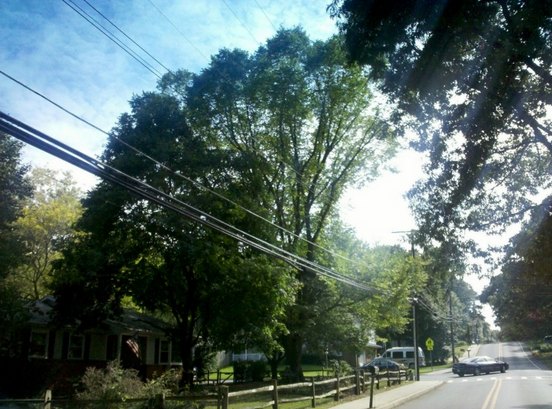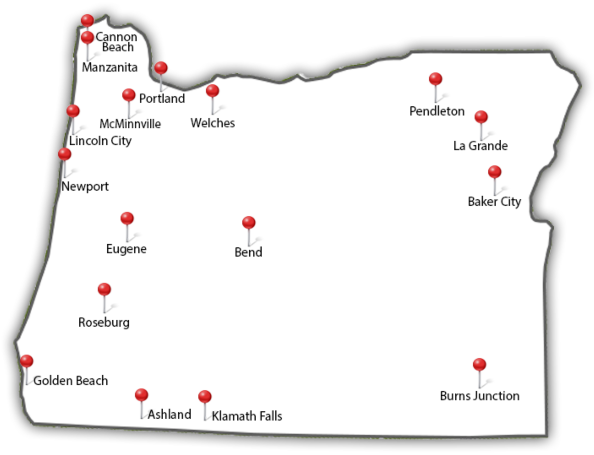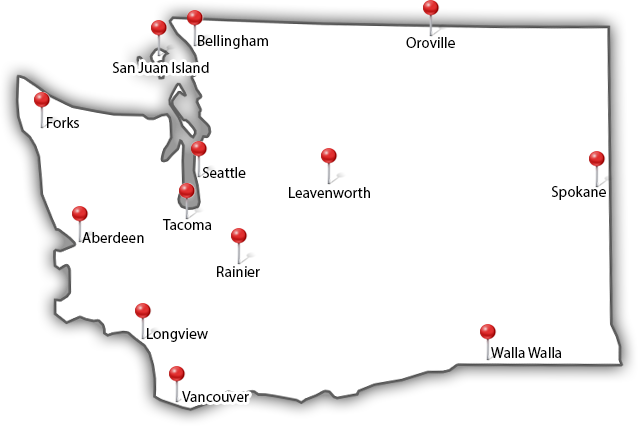What Is Tree Topping, and Should You Do It?

Photo: Hugh Conlon
What is Tree Topping?
Tree topping is sometimes done to mature trees. It’s when people cut branches down to stubs or to lateral branches not big enough to sustain the remaining branch. “Rounding over,” “hat-racking,” “tipping,” “heading,” “stubbing” or “dehorning,” are all other names for topping.
Why Do People Top Trees?
Some homeowners top a tree when it grows too tall for their liking. They are under the false impression that topping reduces the hazard of falling branches during a storm. It actually has the opposite effect. People also top trees when they interfere with sunny garden areas, solar collectors, buildings, or power lines.

Source: Cape Blogger
What’s So Bad About Tree Topping?
1. Topping stresses trees. Remember learning about photosynthesis in biology? Basically, leaves are the food source of trees. Topping depletes the tree’s stored reserves and removes a major portion of the tree’s food-making ability.
2. Topping activates undesirable growth. Topping a tree removes most of the buds that would form a normal branch system, often stimulating “water sprout” regrowth just below the pruning cut. Water sprouts are dense, ugly, upright branches, and they grow fast. Topped trees quickly grow back to their original height, but lack the beauty of their natural form.
3. Topping leaves behind gaping wounds. The wounds left behind from tree topping are slow to close. This makes the tree more susceptible to fungal decay or insect attacks. If it is invaded by either fungus or insects, it can spread into the trunk, killing the tree.
4. Topping can lead to sunburn. That’s right, trees can get sunburned, too. The leaves on the branches within a tree’s crown absorb sunlight. When the leaves are removed, the trunk and the branches that remain are abruptly exposed to high levels of heat and light. Increased sun exposure on the branches and trunk can cause severe bark damage.
5. Topping deforms trees. When a tree is topped, its natural beauty is replaced by ugly branch stubs, distinct pruning cuts, and branches that grow in a broom-like shape. Tree topping can lower the resale value of your property.

Source: Kelly’s Cutting Edge
Alternatives to Tree Topping
Sometimes you want to reduce the height or spread of a tree, to provide room for a power line, for example. There are recommended techniques for this.
Remove small branches to their point of origin. If you want to shorten a larger tree limb, prune it back to a lateral branch that is large enough to support it. How do you know if it’s large enough? It must be at least one-third the diameter of the limb being removed. This practice of branch reduction helps preserve the tree’s natural form. Sometimes the best thing to do is remove the entire tree and replace it with a smaller species.
In summary, the answer is no, you should not top trees. Tree topping stresses trees, stimulates undesirable growth, leaves gaping wounds, damages the bark, and makes trees ugly! Our certified arborists at Northwest Arbor-Culture, Inc. discourage the practice.
Do you have any trees on your property that you would like reduced in size? Contact the certified arborists at Northwest Arbor-Culture today. We can prune your tree safely.
blog comments powered by Disqus









